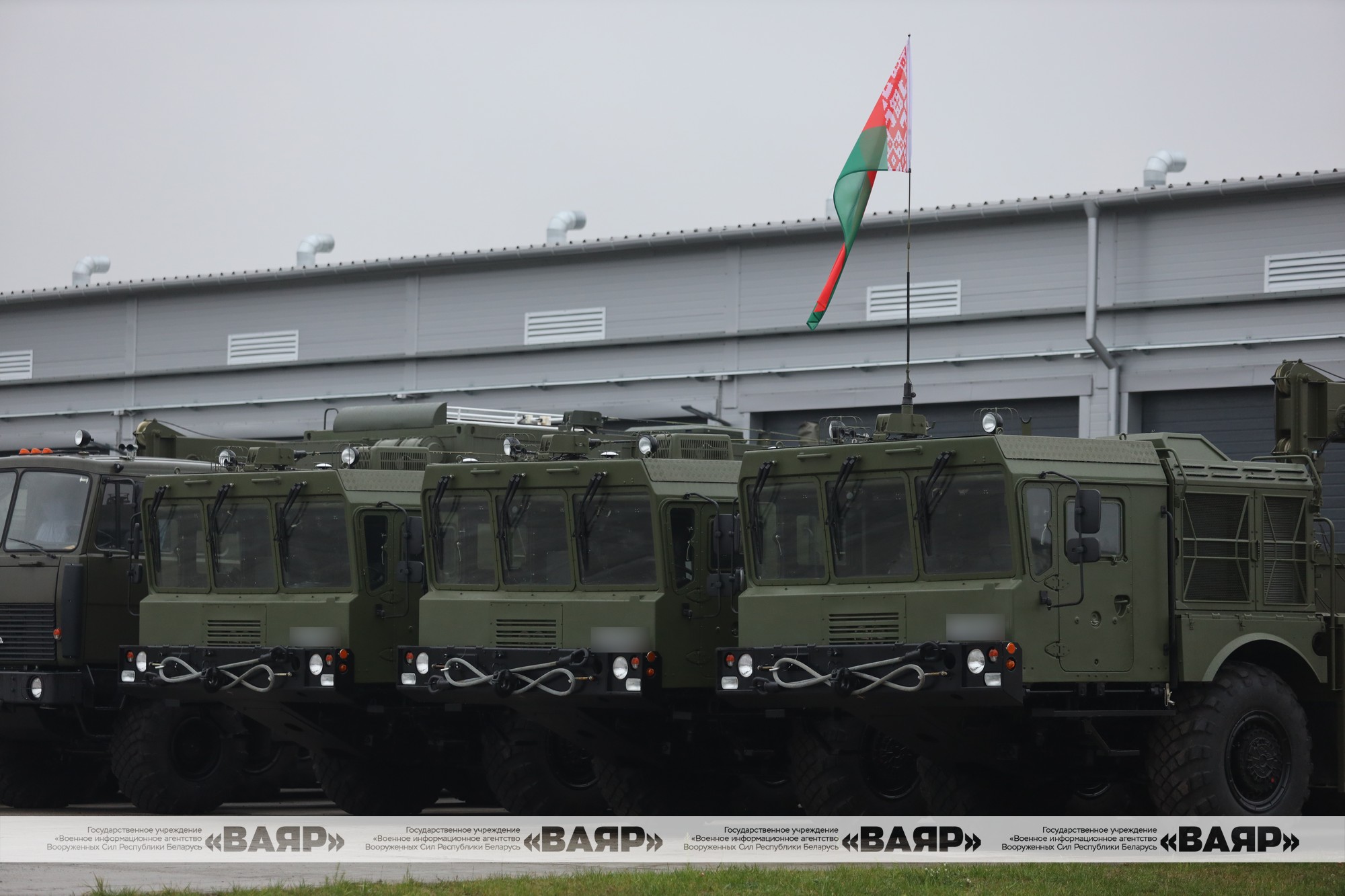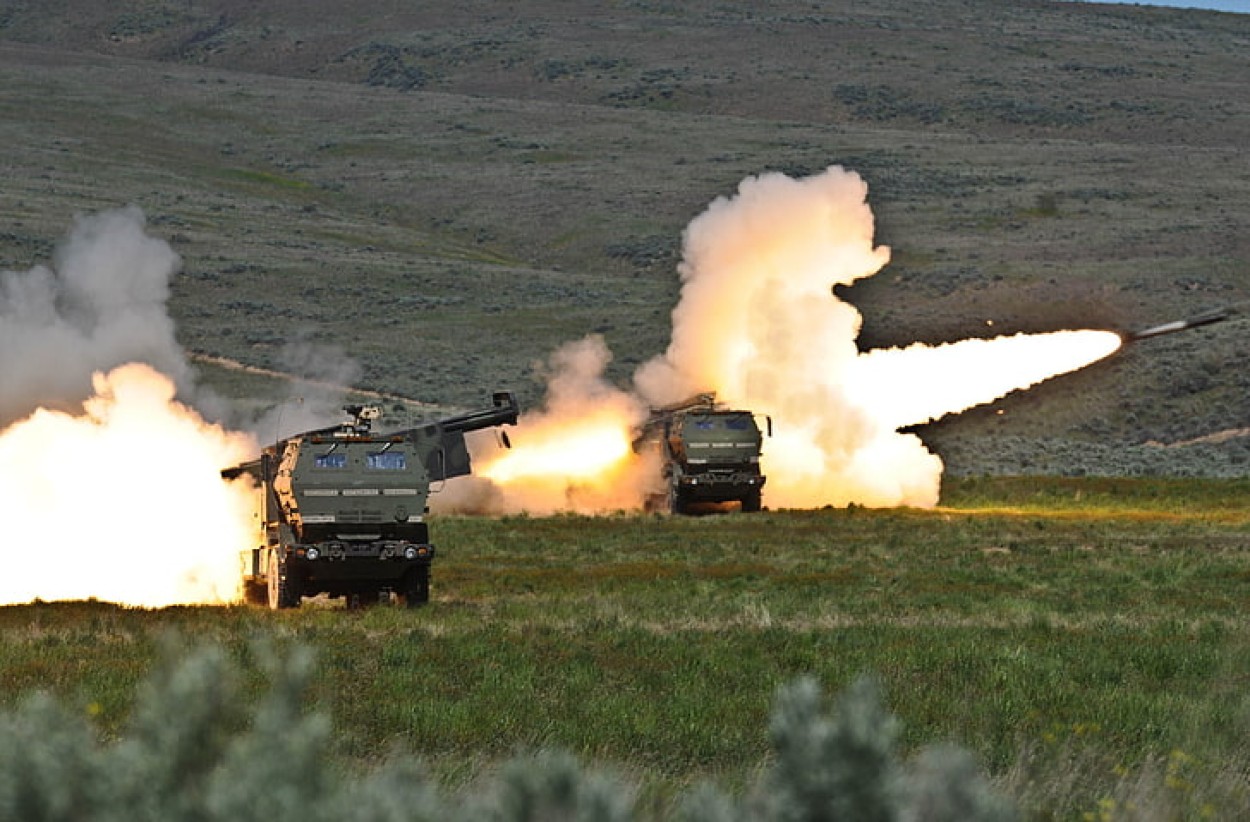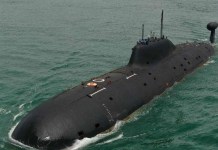The first batch of the Polonez-M multiple-launch rocket system, positioned as a rival to the American HIMARS system and reportedly developed in collaboration with the Chinese industry, has been delivered to the Belarusian Armed Forces.
The Belarusian Defense Ministry announced on its official X (formerly Twitter) account that a rocket artillery brigade of the country’s Armed Forces has successfully procured the advanced multiple-launch rocket systems (MLRS) Polonez-M.
The Defense Ministry press service explained that the MLRS Polonez-M represents an advancement over the current MLRS Polonez used by the Belarusian army.
The upgraded system boasts superior tactical and technical characteristics compared to its predecessor. The enhanced MLRS Polonez-M can effectively neutralize up to eight targets simultaneously, achieving precision strikes at a range of up to 300 kilometers.
This new MLRS can neutralize command centers, weapon arsenals, concentrations of enemy hardware, and enemy personnel. The Defense Ministry added that integrating new weapon systems is crucial to strategic deterrence.

The Ministry also published images capturing the formal introduction of the new MLRS into the military’s arsenal, along with a video showcasing the weapon system in action as it effectively engages and strikes its targets.
However, the nation has not disclosed the precise quantity of these advanced systems incorporated into the military.
Belarus Armed Forces Chief of the General Staff Viktor Gulevich underlined that the enhanced MLRS Polonez-M demonstrates superior combat capabilities, enabling precise missile strikes at targets up to 300km away.
He highlighted that specific parameters of this upgraded system are “unparalleled” in their performance.

“I congratulate the brigade’s personnel on getting the new weapon system. I am confident that they will continue worthily upholding glorious combat traditions of missile forces and will multiply the glory of past generations,” Viktor Gulevich added.
A Rival To US-made HIMARS?
The Polonez-M MLRS complex is a refined iteration of the existing Polonaise system within the Belarusian army. Its development commenced in 2016, followed by its first firing a year later, and by 2018, the system was recommended for adoption by the Belarusian army.
The Polonez-M, which was developed initially as an alternative to the Russian Iskander-E, shares broad similarities in capabilities with its Russian counterpart.
The Polonez-M MLRS battery, constructed on the MAZ truck platform, comprises a mobile control module, two transport-loading vehicles, and two launchers.
The combat control vehicle’s equipment facilitates communication with combat, transport-loading, and command vehicles within a range of up to 10 km while in motion and up to 30 km when stationary.
Operated by a four-person crew, the Polonaise can work continuously for up to 48 hours. The system can be prepared in under eight minutes with a salvo capability of eight missiles to neutralize eight different targets within 50 seconds.
А пока новенькие красавчики «Полонез-М» построены на плацу, мы посмотрим на них в работе. pic.twitter.com/eJ7ozWRU3b
— Минобороны Беларуси (@MOD_BY) November 15, 2023
The MLRS’s first, non-modernized version was produced in limited quantities, with the Belarusian ground forces receiving a few launchers from the industry.
Meanwhile, despite Belarus not officially acknowledging Chinese involvement, reports have suggested Beijing may have played a role in the system’s development.
Moreover, the system is described as a competitor to the American HIMARS system and utilizes satellite navigation to execute precise strikes.
Russian military analyst Andrei Frolov also suggested that Chinese technology could have been involved in developing the Polonez-M.
Speaking to Izvestia, Frolov remarked that the Belarusian MLRS is now equipped with a sophisticated heavy-guided missile.
He acknowledged the uncertainty regarding the extent of Chinese components, stating, “I don’t know what the share of components is from China.”
Regarding performance, Frolov asserted that the Polonez-M surpasses HIMARS and is on par with ATACMS missiles, possibly surpassing them in accuracy and modern features.
Notably, the initial Polonex system utilized A200 rockets for MLRS, which is believed to be a product of a Chinese defense company.
Do The Russian Forces Also Require This Weapon System?
The successful introduction of the Polonez-M MLRS in the Belarusian Armed Forces has sparked discussions among Russian experts regarding adopting a similar system in the Russian military.
The deliberations stem from the observed effectiveness of the Ukrainian HIMARS on the battlefield, which is credited with causing significant destruction to crucial Russian command centers, ammunition arsenals, and airfields.
Military expert Yuri Lyamin pointed out that whether Belarus could transfer the new Polonez system to the Russian army is contingent on licensing agreements between China and Belarus governing the use and sale of these advanced missile systems.
Lyamin also highlighted the Chinese tendency to allow their weapons to enter conflict zones through intermediary nations, stating, “We would need such systems.”
He argued that the Tornado-S MLRS can target objects 120 km away. On the other hand, the Iskander missiles, with a range of up to 500 km, are frequently considered excessive for various scenarios.

These missiles, designed to penetrate missile defenses, come with a high cost, leading to their reserved use for genuinely crucial targets, Lyamin explained.
There hasn’t been any explicit indication of interest or formalized intent from the Russian military regarding the acquisition or integration of this particular weapon system.
Nevertheless, other experts in Russia assert that the capabilities of the Iskander operational tactical missile system and the Tornado-S MLRS are deemed entirely adequate for effectively addressing the combat tasks currently confronting the Russian army.
- Contact the author at ashishmichel(at)gmail.com
- Follow EurAsian Times on Google News




